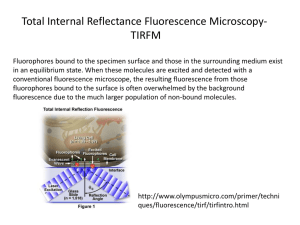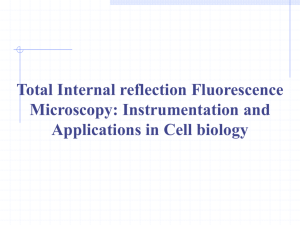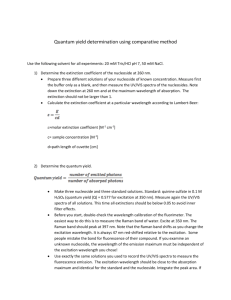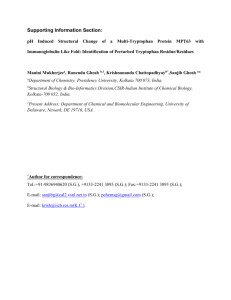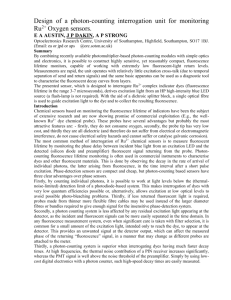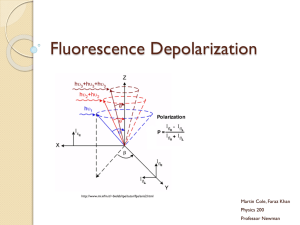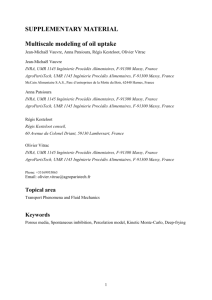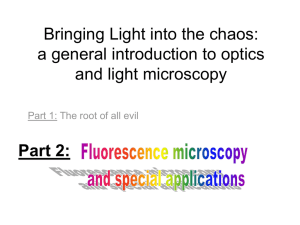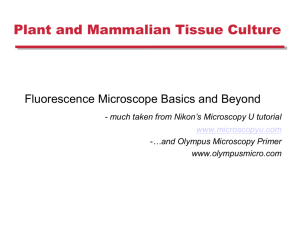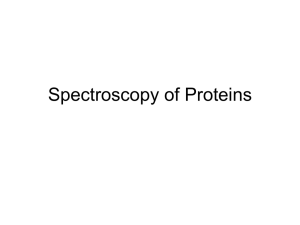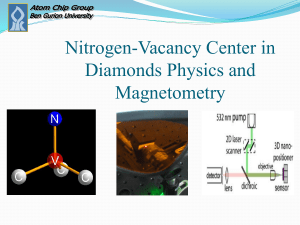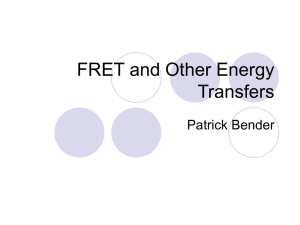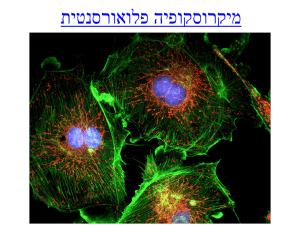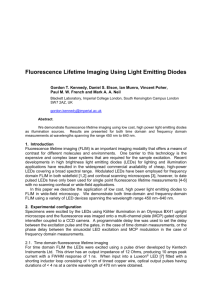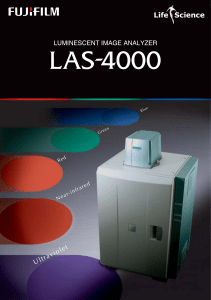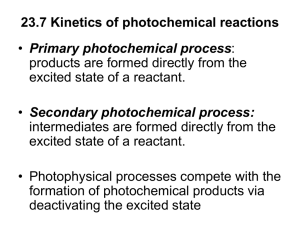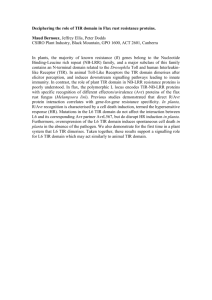Lecture 4. Fluorescence microscopy II
advertisement
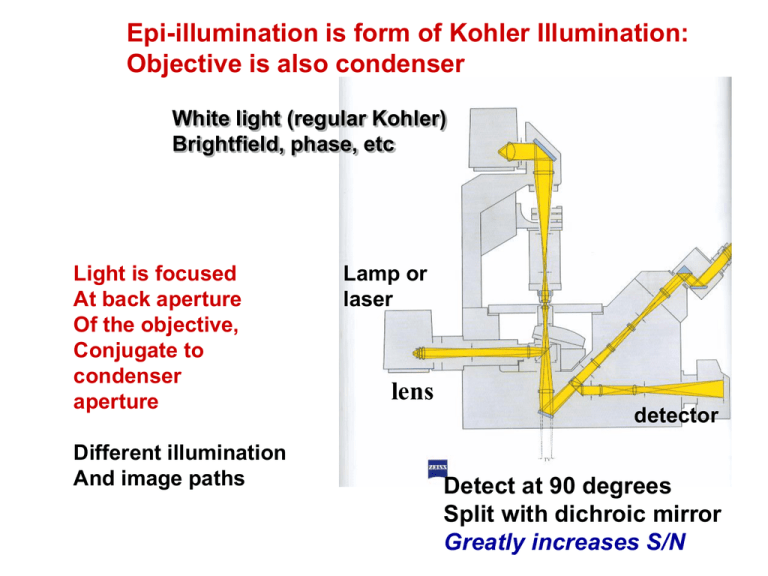
Epi-illumination is form of Kohler Illumination: Objective is also condenser White light (regular Kohler) Brightfield, phase, etc Light is focused At back aperture Of the objective, Conjugate to condenser aperture Different illumination And image paths Lamp or laser lens detector Detect at 90 degrees Split with dichroic mirror Greatly increases S/N Epi-illumination separates light source, Fluorescence signal First barrier filter Selects excitation Arc lamp Second barrier filter Selects signal From background dichroic mirror objective lens specimen •Excitation filter typically interference bandpass •Dichroic is longwave pass •For one dye-maybe no emission filter Dielectric layers or Metallic layers used as filter coating Reflect, transmit colors of choice by using multilayers Coatings work by interference Reflectance depends on Wavelength, film thickness material (index*length), incident angle. Fabry-Pérot interferometer Use of bandpass interference filters in wavelength selection Block 3-6 OD outside of band Transmit 10-50% (worse for UV) Dichroic Mirrors: separate colors by using coatings Beam separator: Separate different colors (fluorescence) At right angles: used in microscopes Beam combiner: Multiple lasers Transition should be sharp How CCD Camera Works Serial readout limit speed. A partial solution is using Frame-Transfer. Comparison: Detector Quantum Yield Efficiency & Signal/Noise? • • • • • Collection efficiency of microscopy: ~25% Detector quantum yield: ~70-90% Thermal noise Shot noise (quantum noise): Read noise (A/D conversion) CCD Dark counts Cooling methods: Liquid Nitrogen Thermal Electric Thermal Electric in ultrahigh vacuum EM-CCD - Largely eliminate read noise - Introduces amplification noise - Net effect is S/N improvement for extremely low light level situation Detecting A Single Fluorescent Molecule? • Size: ~ 1nm • Absorption Cross-section: ~ 10-16 cm2 • Quantum Yield: ~1 Absorbance of 1 molecule = ? How many fluorescence photons per excitation photons? Single Molecule “Blinks” How to Analyze Single Molecule Measurements (I) -- Histograms Most Probable Value vs Average value Single molecule fluorescence: experimental considerations • Excitation – High NA objective lens – “Bright” fluorophores • High extinction coefficient • High quantum yield – Exclude quenchers • particularly molecular oxygen! • O2 scavengers include β-mercaptoethanol (BME), catalase • Emission – Wavelength dependence of detectors – Spectral separation from excitation – Efficient detection optics – Autofluorescence and contaminant fluorescence – Photobleaching and ISC – Scatter: • elastic (Rayleigh) • inelastic (Raman) Back to Single Protein Detection Myosin V -- a motor protein. De-convolution Microscopy Thompson, RE; Larson, DR; Webb, WW, Biophys. J. 2002, Paul Selvin Photodiode PMT: photomultiplier CCD APD: Avalanche Photodiode PMT APD Both can work under Single-photon Counting mode Typical Dark Counts CCD Temperature Sensitive Area Dark Counts -70 C 10-20 m 0.001 e/sec/pixel APD -20 C 100-500 m 10-100 e/sec/pixel Total Internal Reflection Fluorescence Microscopy TIRFM Total internal reflection: the reflection that occurs when light, in a higher refractive-index medium, strikes an interface with a medium that has a lower refractive index, at an angle of incidence (α1) greater than the critical angle. Snell’s law dp 0 4n2 sin(1 ) / sin( g ) 1 2 Application Example 1 – Cytoskeleton TIRF Epi Setting up the TIRF microscope Prism-TIRF Objective-TIRF A little History: EVDLS 1980s: start to apply TIR principle to fluorescence and bio-imaging. Daniel Axelrod Prism Based TIRF Setup 1 Spherical Aberration from Aqueous Sample Sample near glass coverslip Sample in the bulk water Water Immersion Objective Fully water immersion Water immersion with coverslip Prism-TIRF Objective-TIRF Key Points: • NA requirement • Oil immersion • Size of the beam 柳田敏雄 Toshio Yanagida Through Objective TIR Design 1: direct coupling Through Objective TIR Design 2: Fiber Optics Optical fiber based light delivery Easy conversion from non-TIR to TIR Compatible with Arc lamp Other Practical Concerns: • Upright or inverted microscope? • Light sources? • Polarization? Arc Lamp TIRF Fresnel equations Polarization Control
